WE DID IT / DISPUTED TERRITORY (2010)
——
2010 / intervention / Chert Gallery, Berlin (DE)
We Did It / Disputed Territory divides and reopens the gallery space. By doing so, the artist reenacts the phenomenon of shrinking cities.
The intervention seems to present itself as a question about what is public and what is private, fusing together some of the principal points the artist has been working on in recent years: the contrast between a space and a ‘non-space’, between an art-dedicated context and a temporarily created exhibition space.
The artist has placed the first object constituting the exhibition in the very public setting of the Schlesisches Tor U-Bahn corner. The sign, which reads ‘we did it/disputed territory’, gives an unequivocal direction to the intentions of the project. Pointing in the direction of the gallery, but without giving any further information, this street-specific piece completely loses its function, becoming an abstract object. Its unpredictable destiny emphasizes its non-function as well, in contrast with its appearance as an informative object.
Upon entering the gallery one is confronted with two different scenarios, again a reinterpretation of the contrast between public and private. The upper floor of the gallery has been transformed into an abandoned room, dark and dirty, seemingly long closed. A hole in one wall reveals a passage into the lower space: a clean, white, welcoming exhibition space. The artworks presented there share the same process-making of the upper floor of the gallery: with intentional elaboration the artist makes them look old and dirty.
In this way, the space itself becomes a camouflage for the artist, a stage where questions about use and interpretation can arise, reflecting on the idea of the authenticity and aesthetic honesty of the artistic practice.
Jenny Chert (2010)
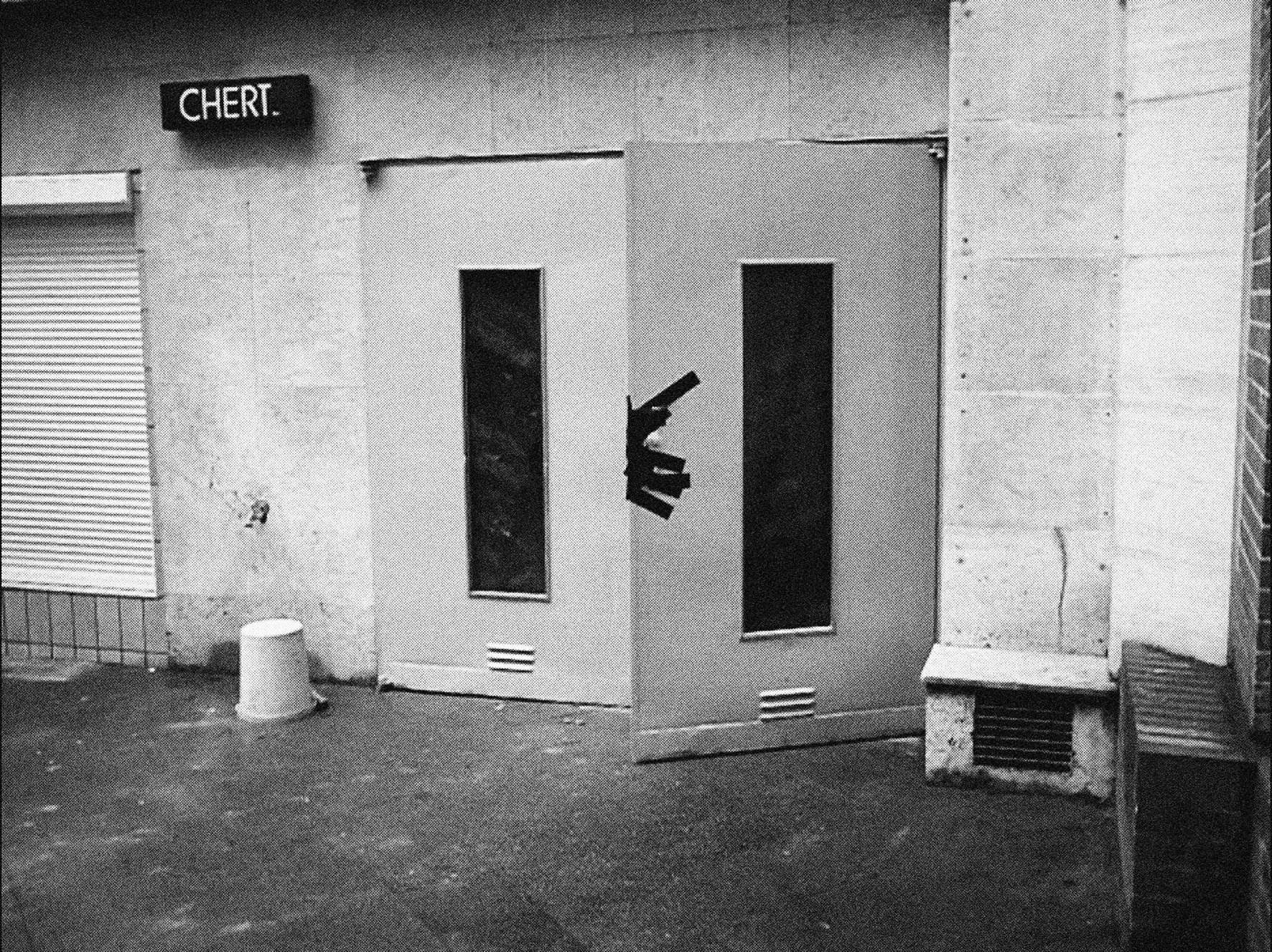
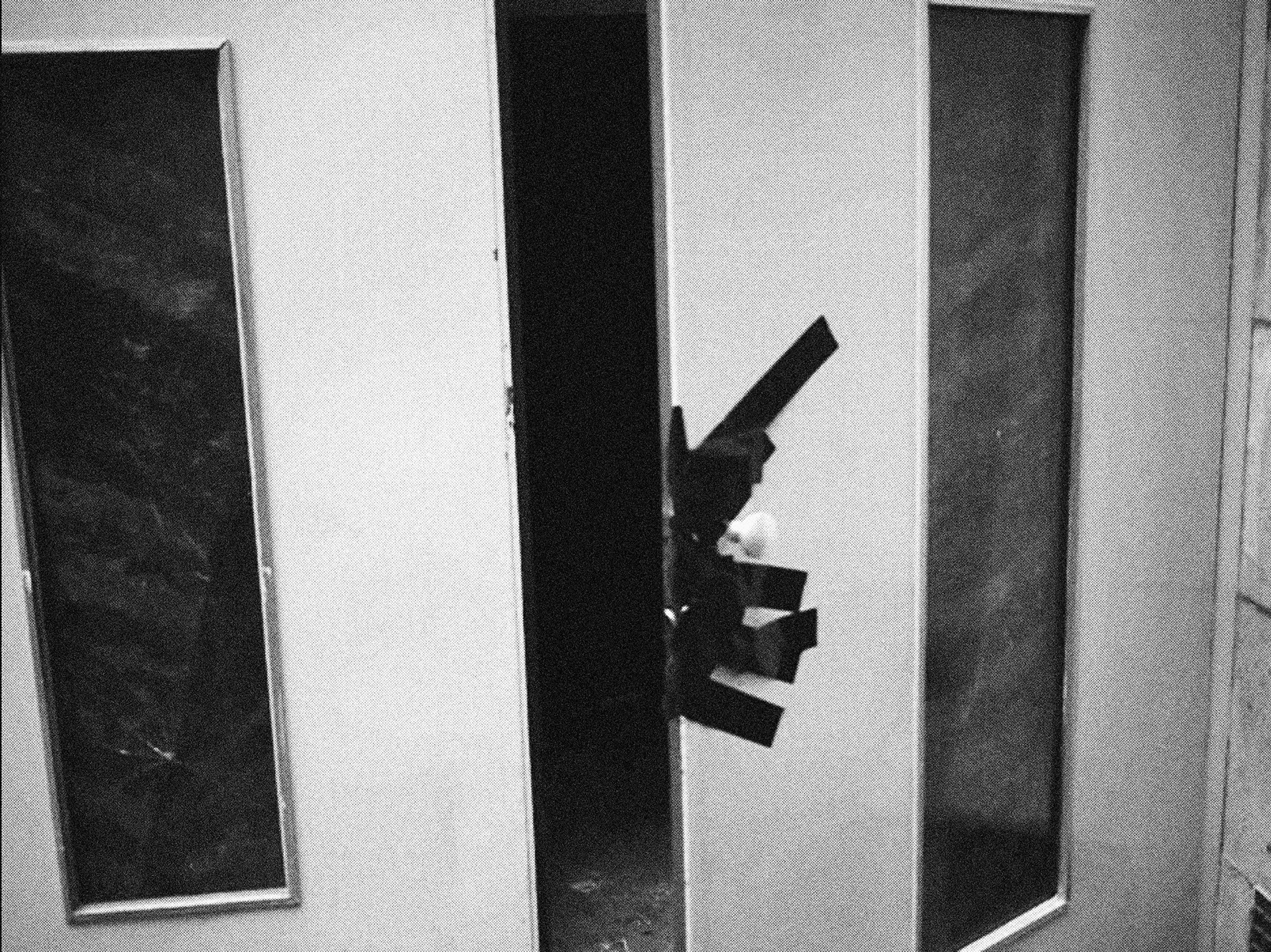

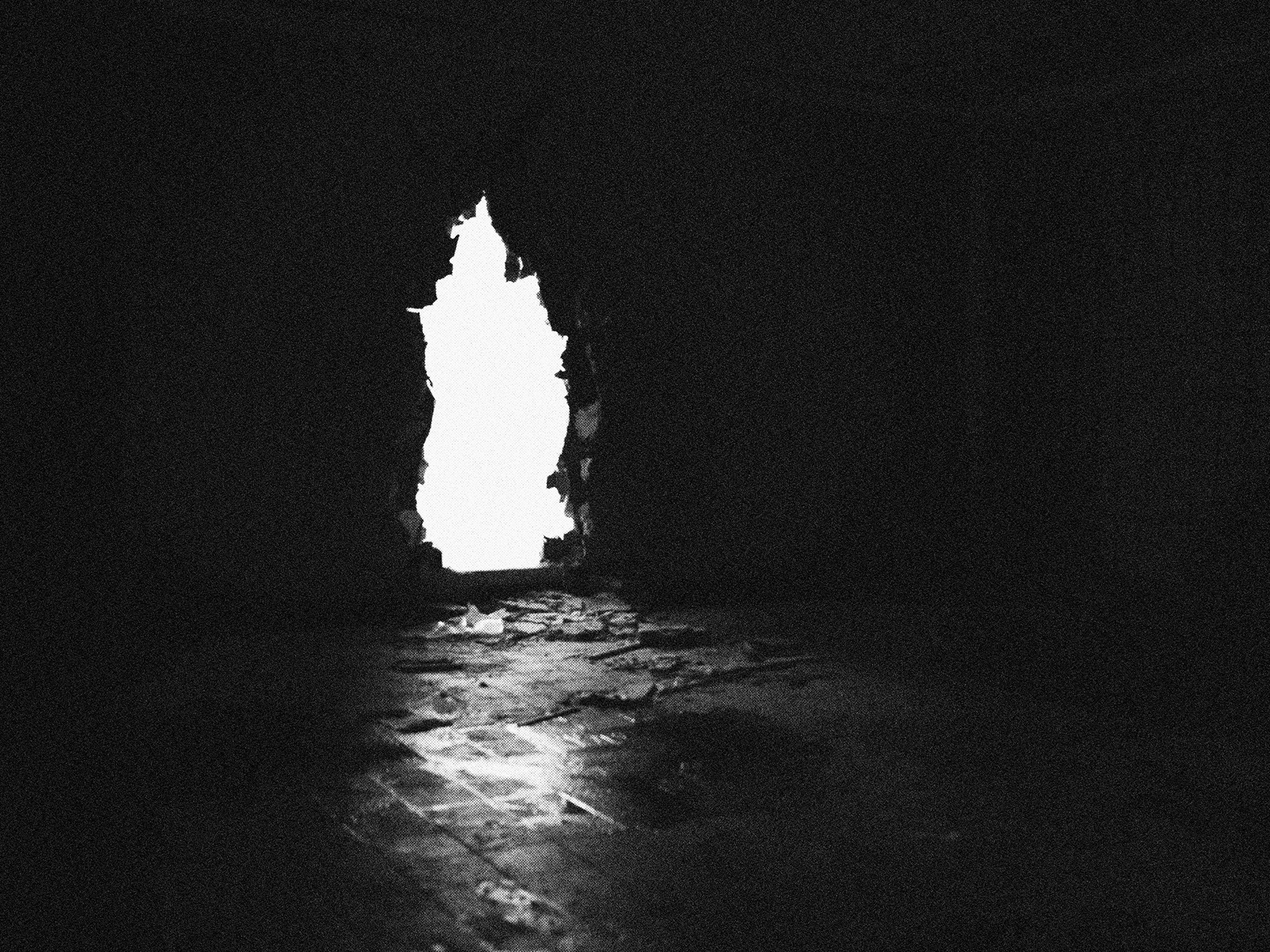
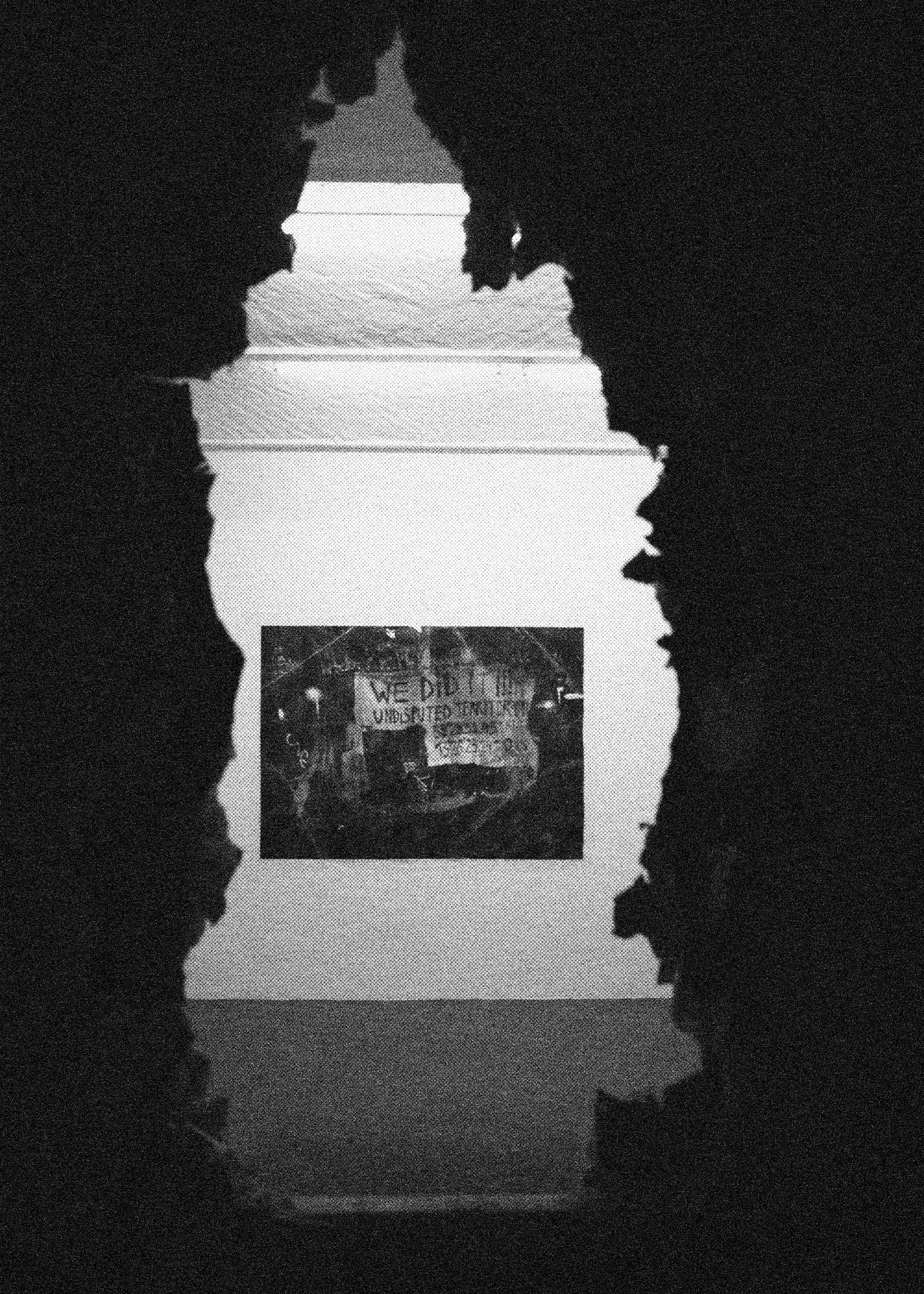

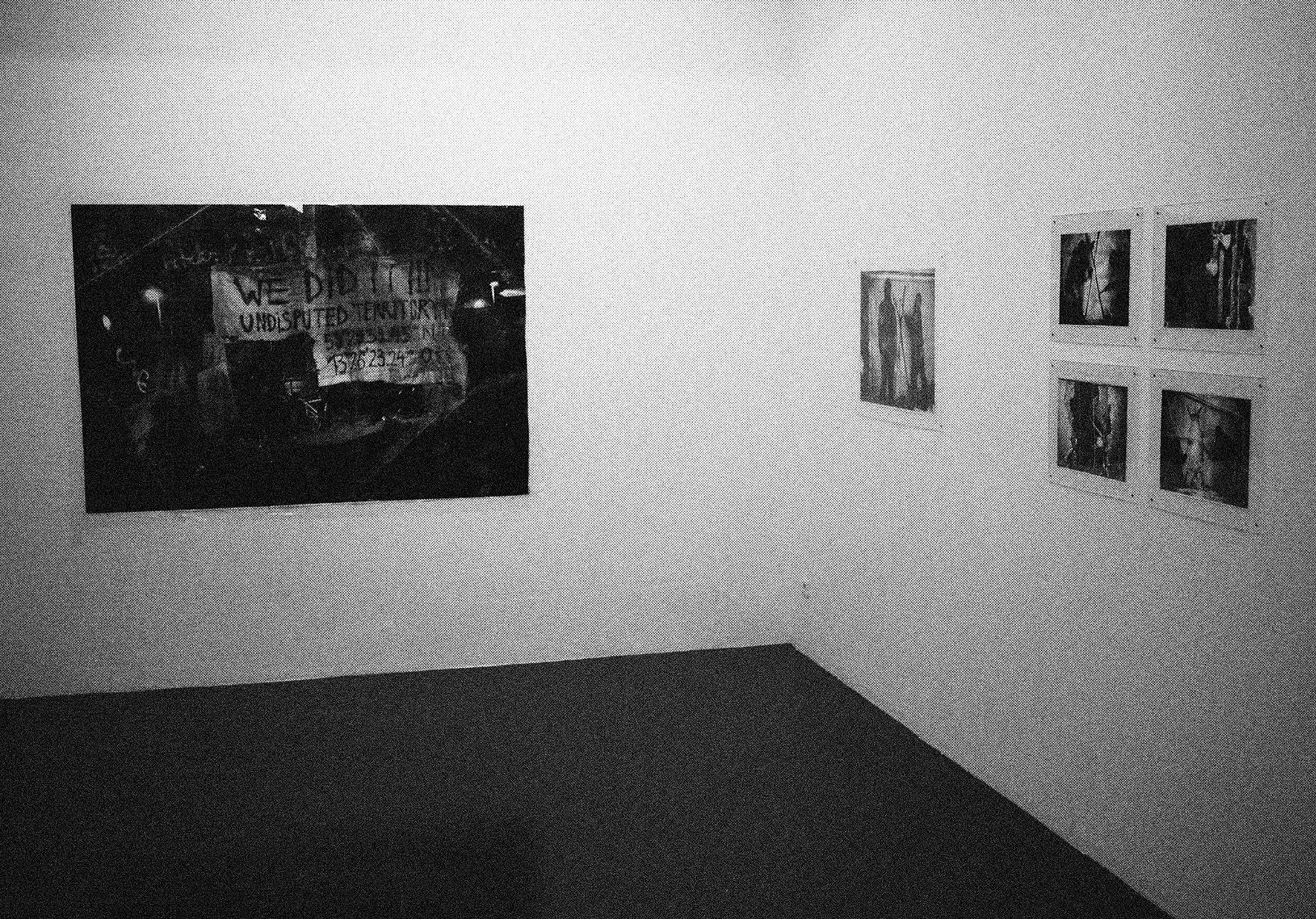

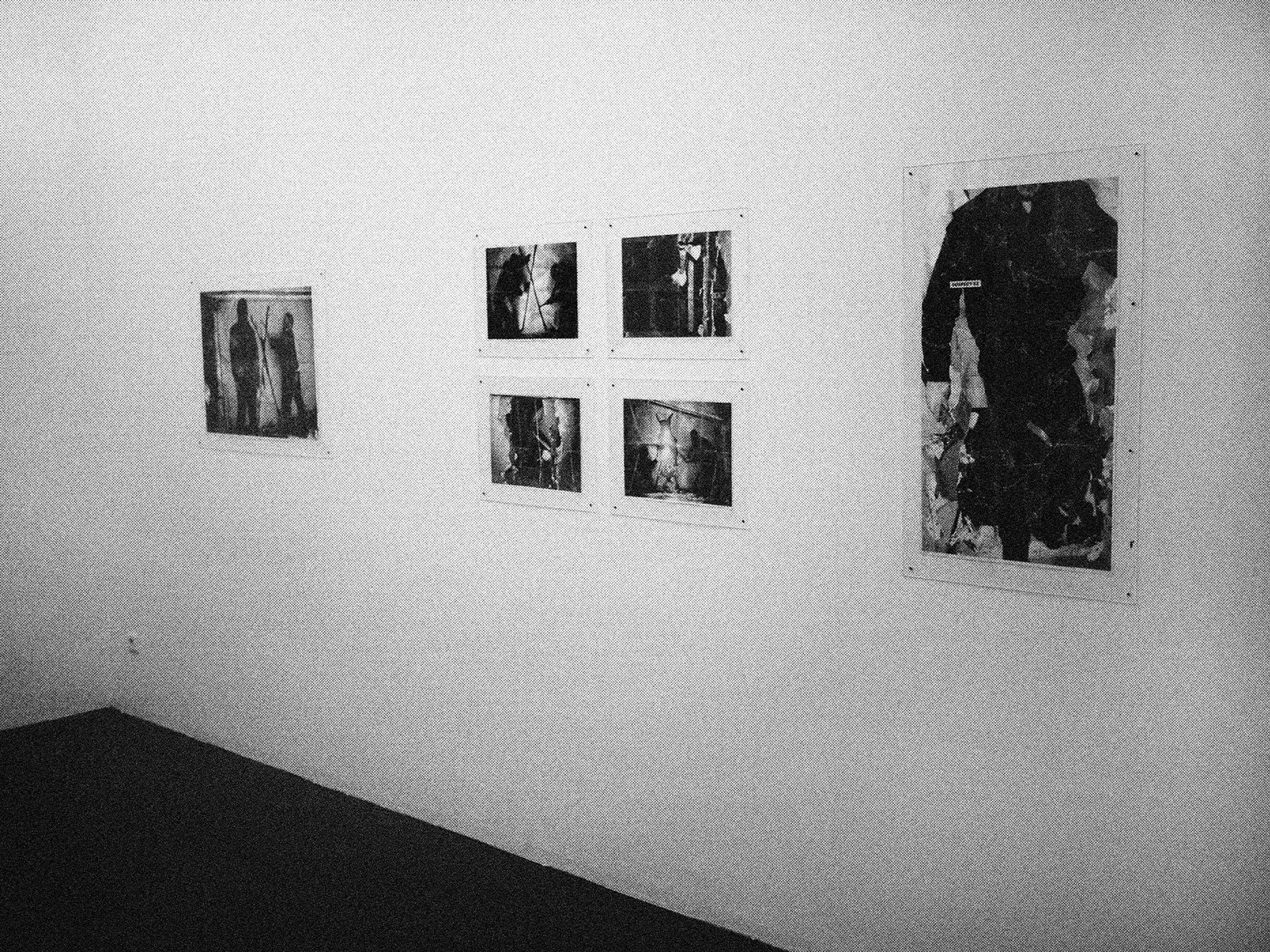

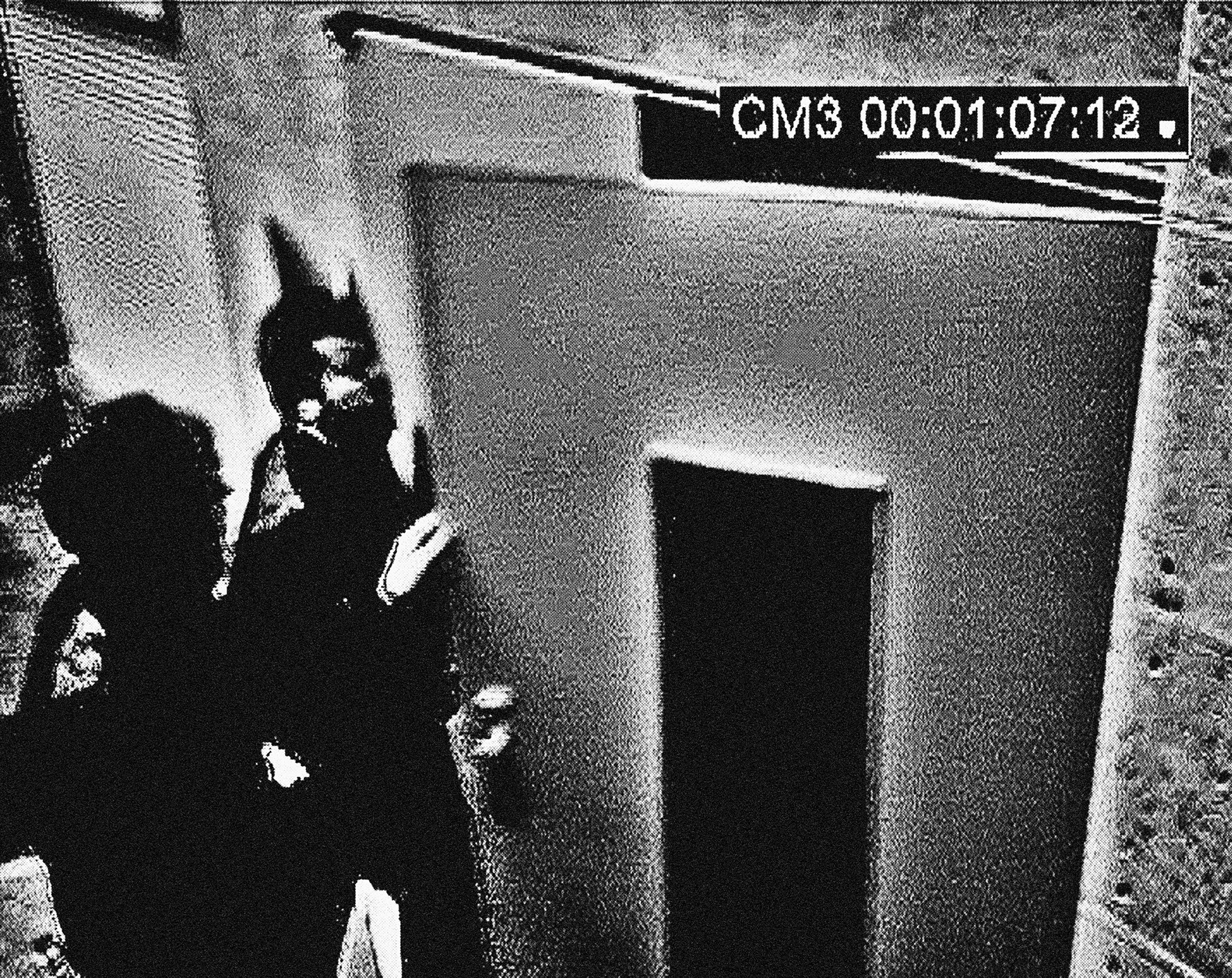
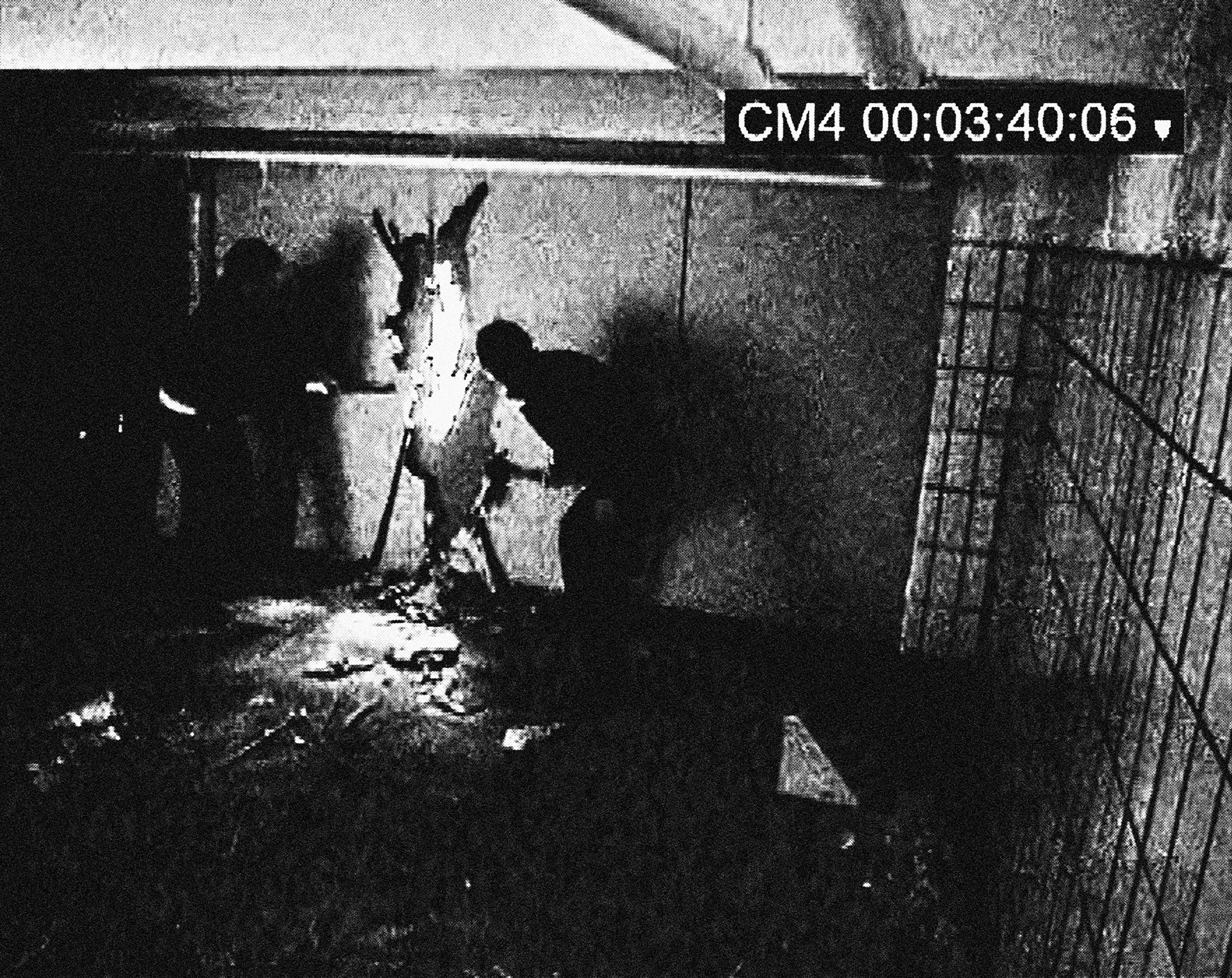
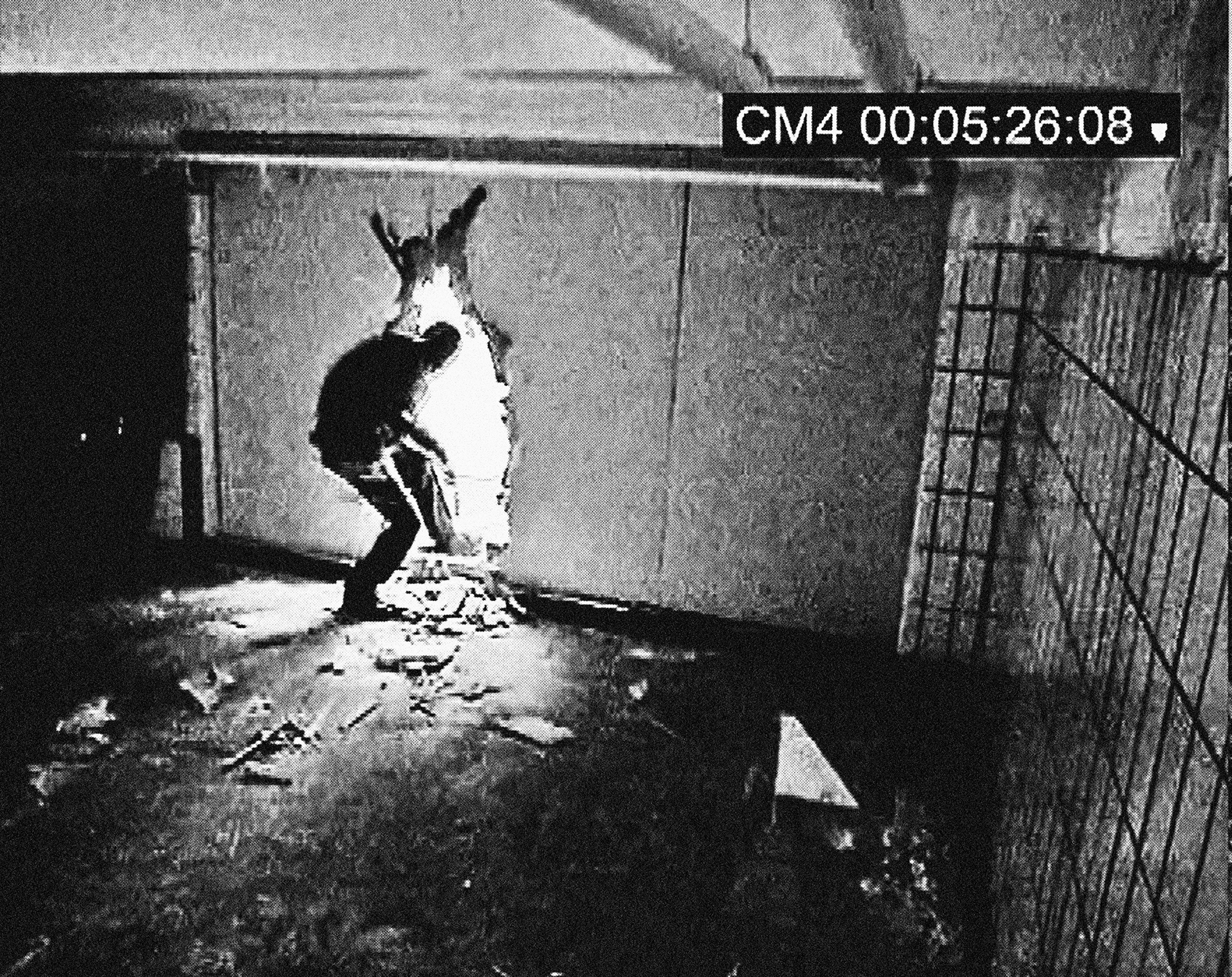
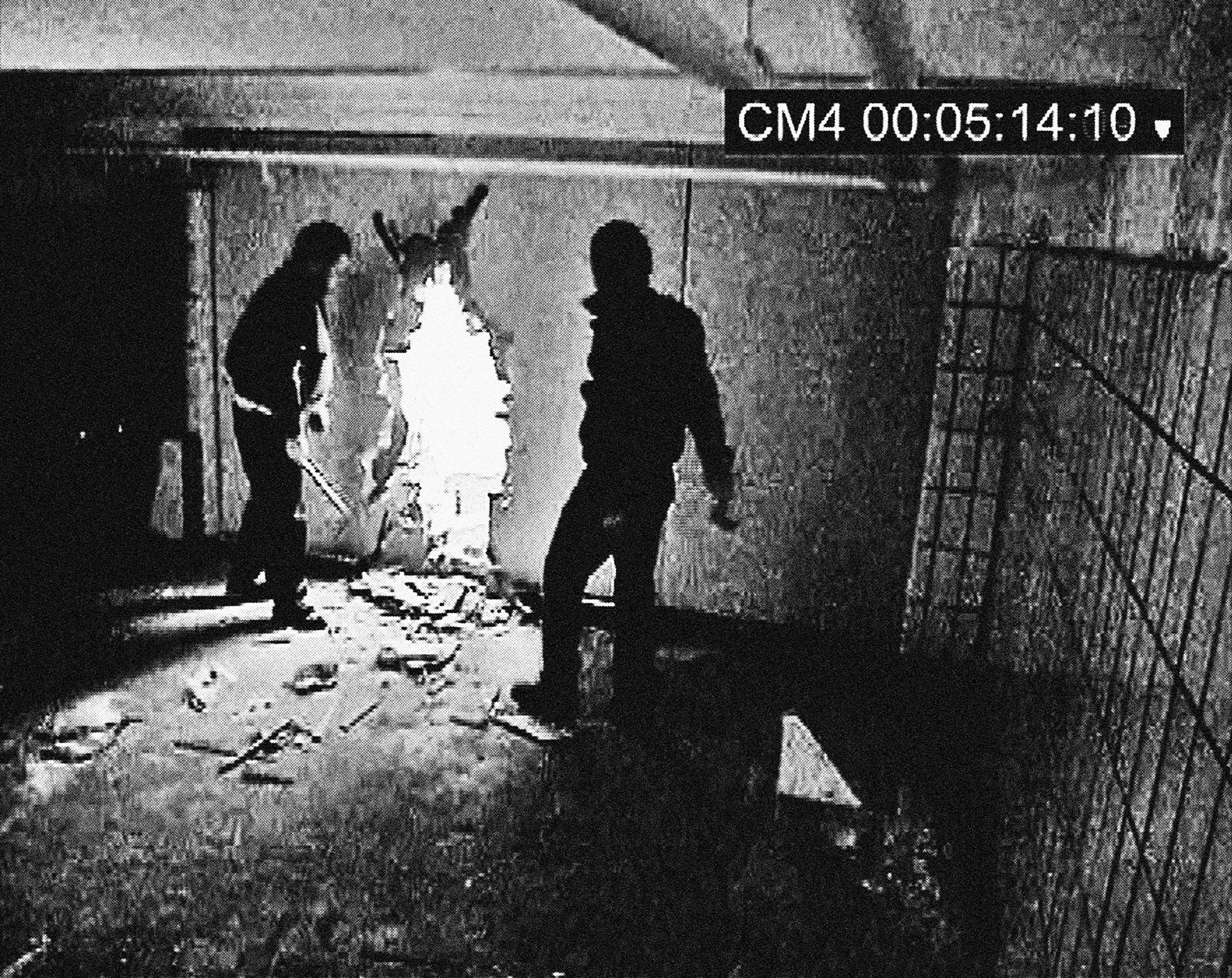

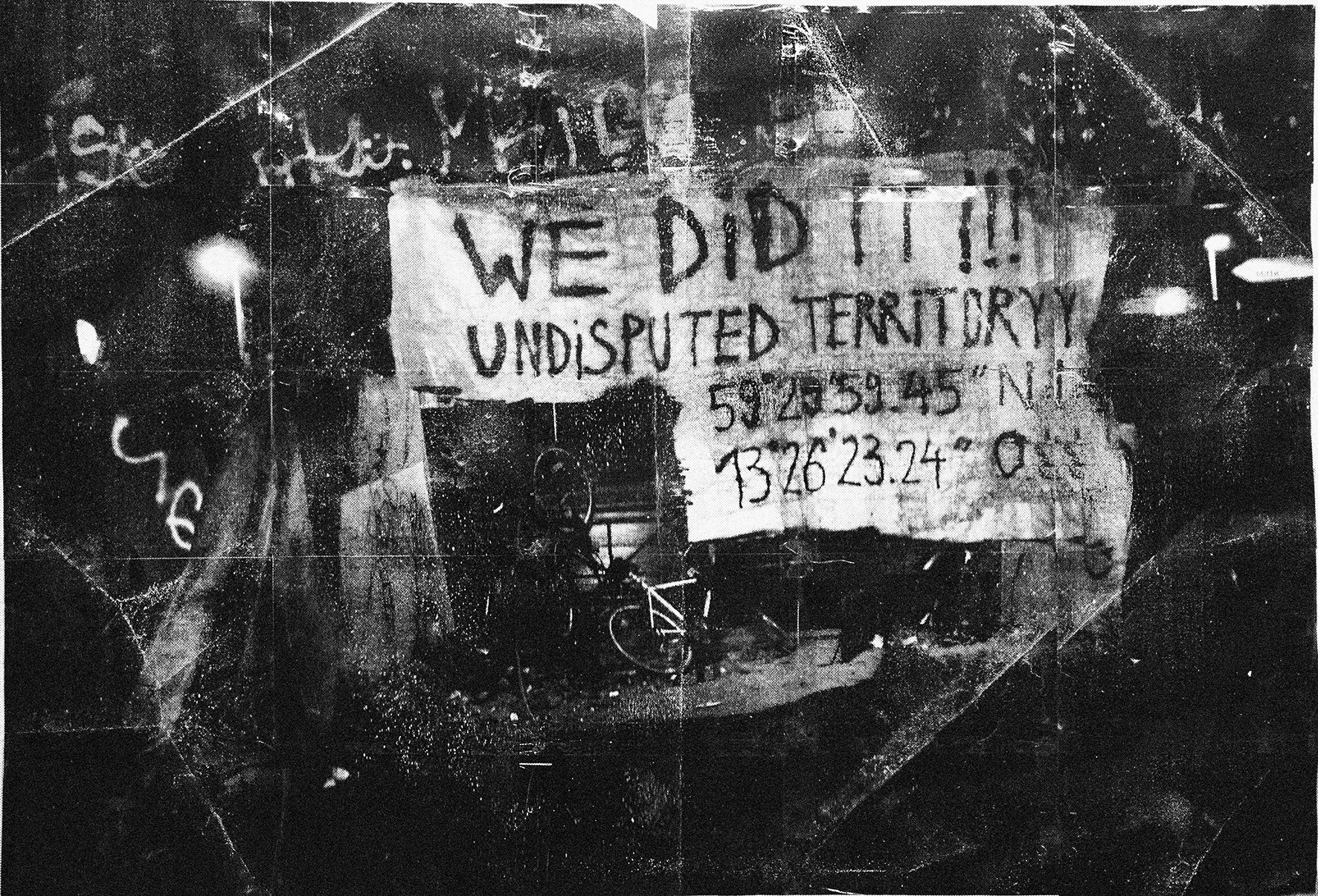

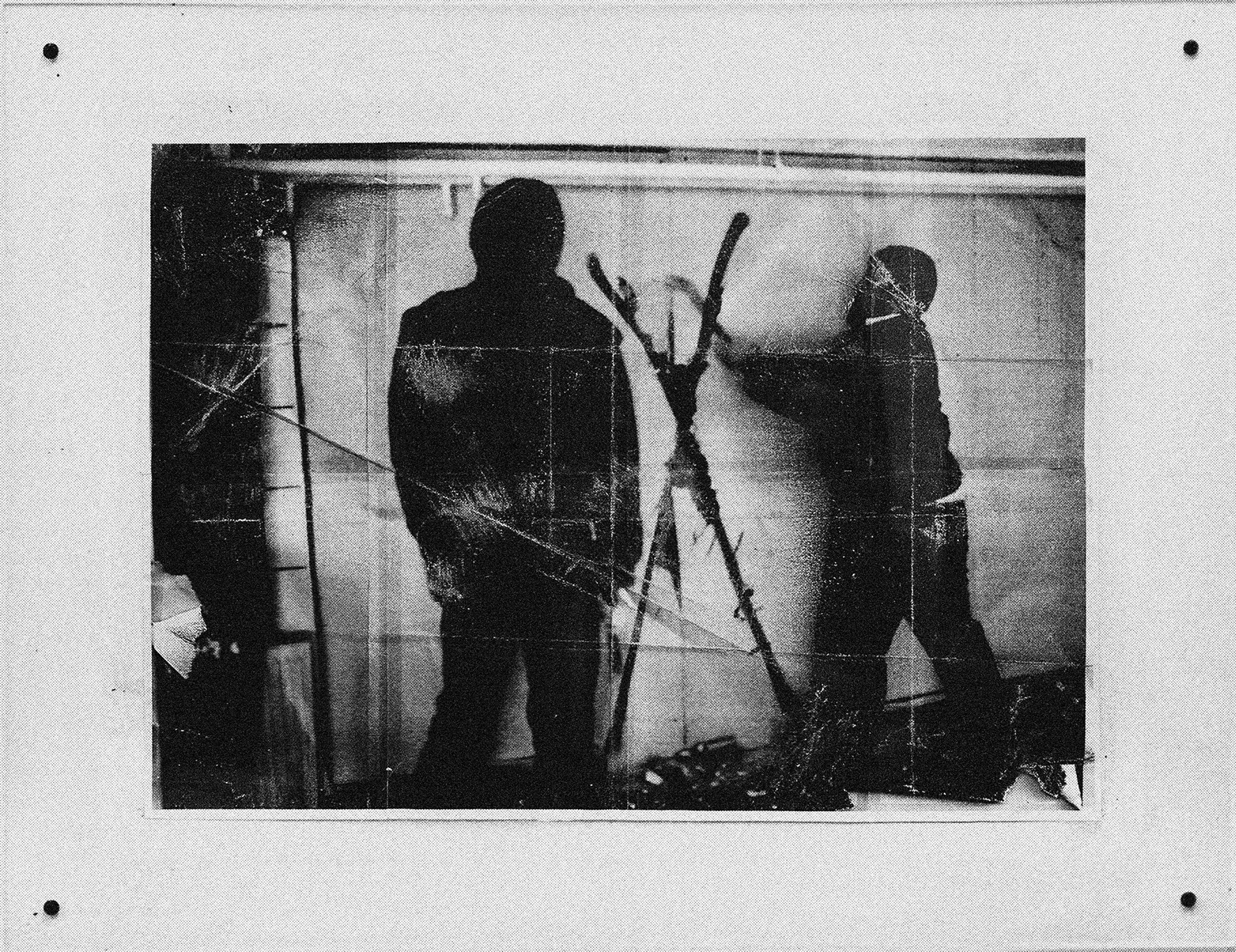
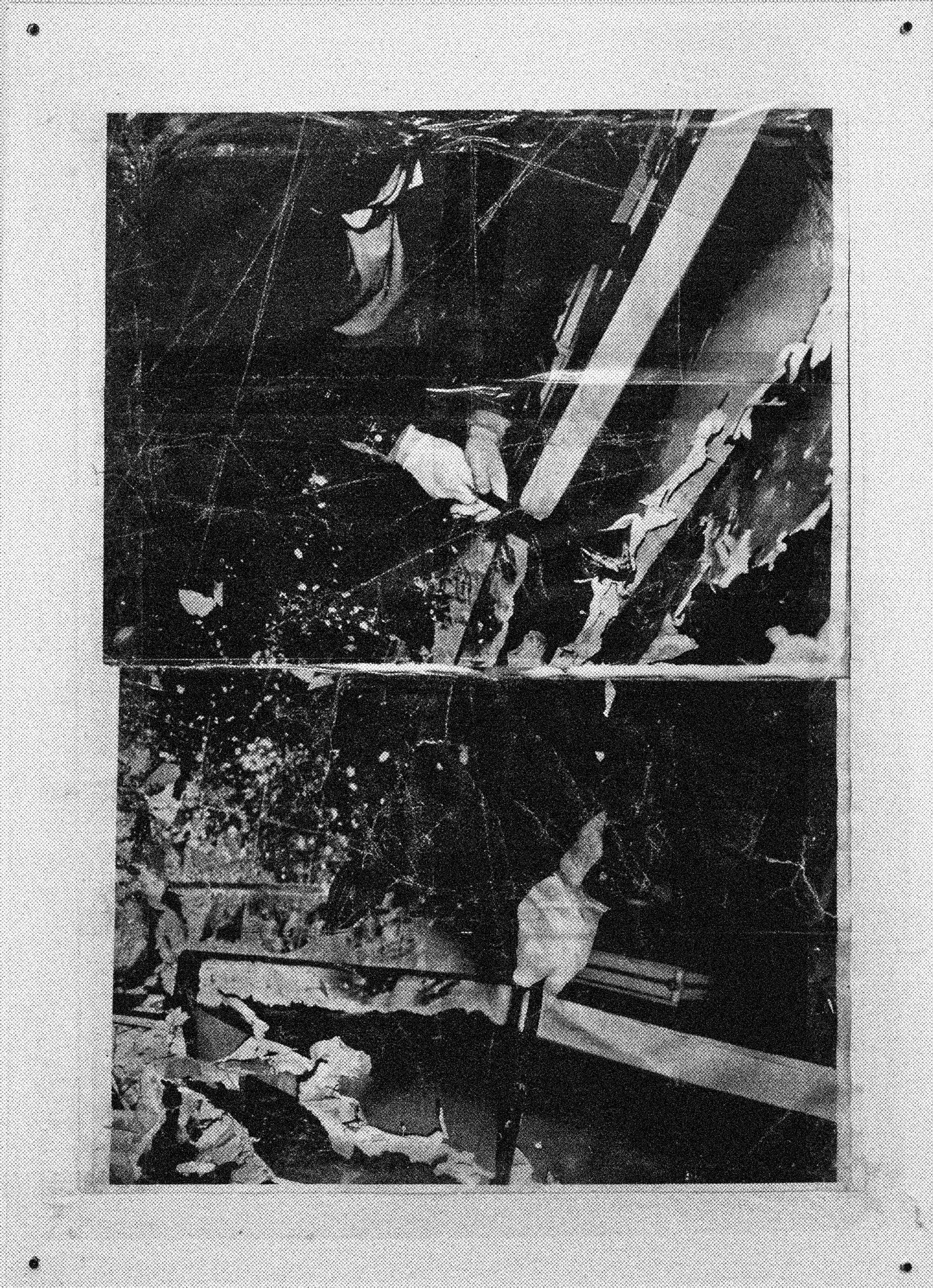
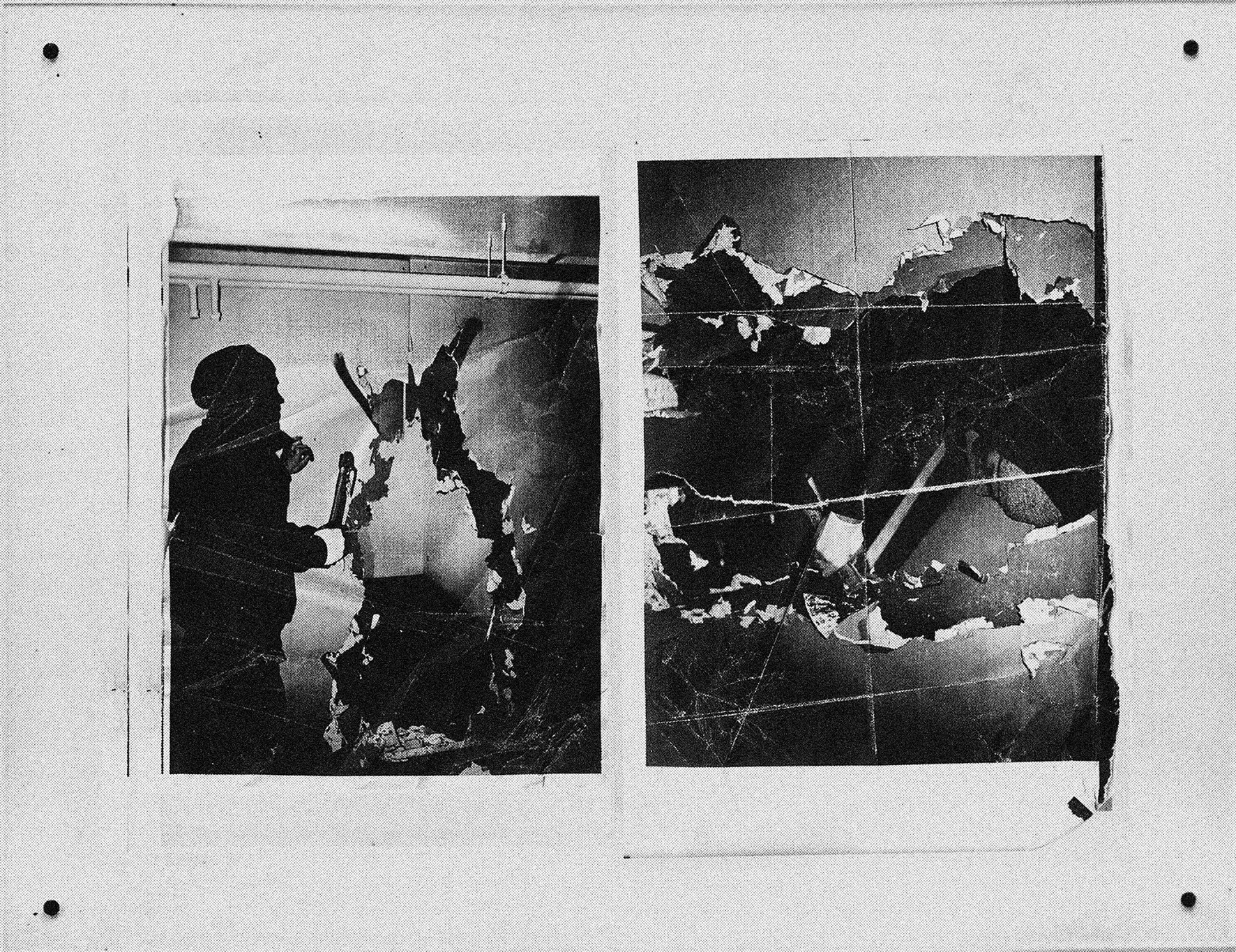
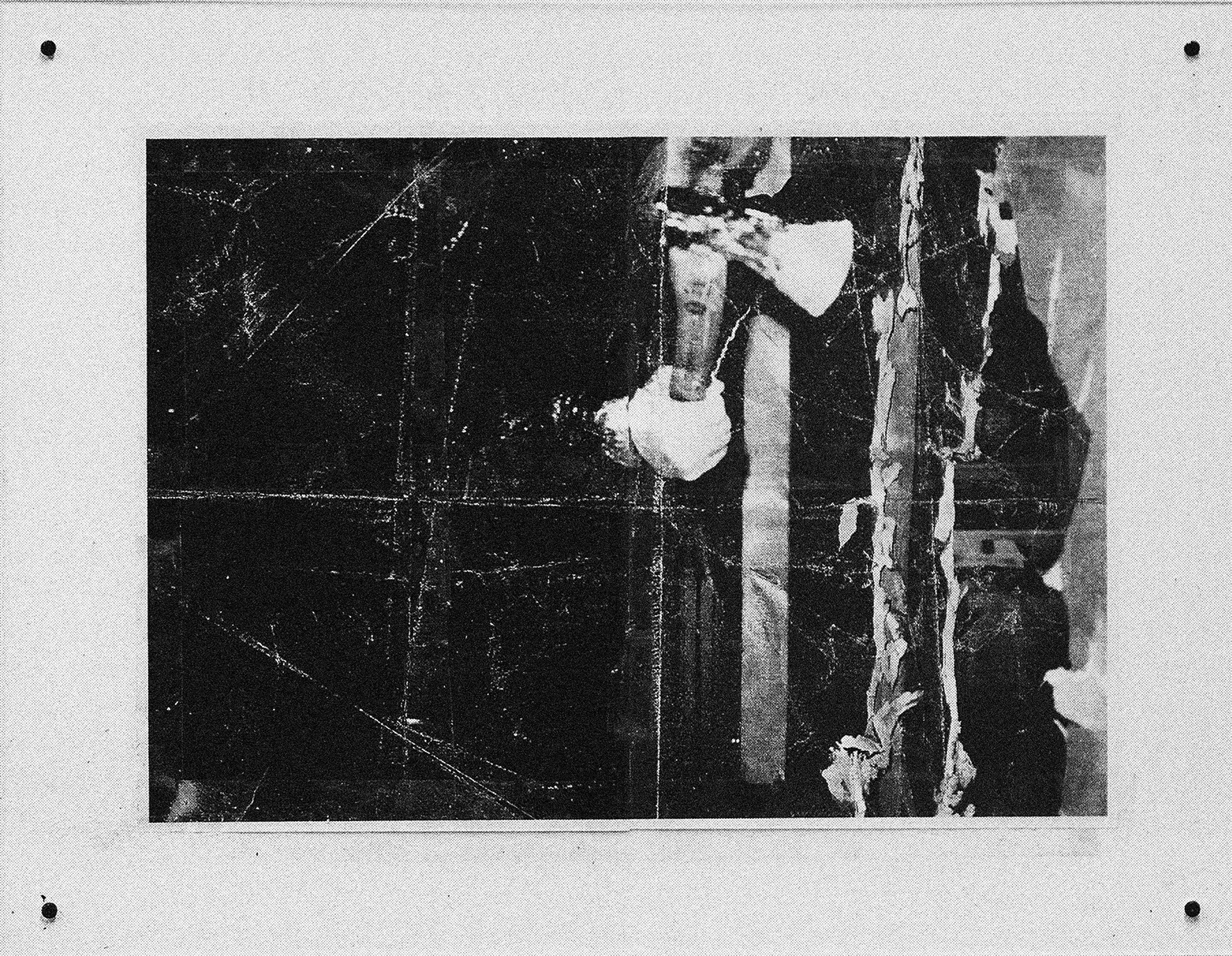
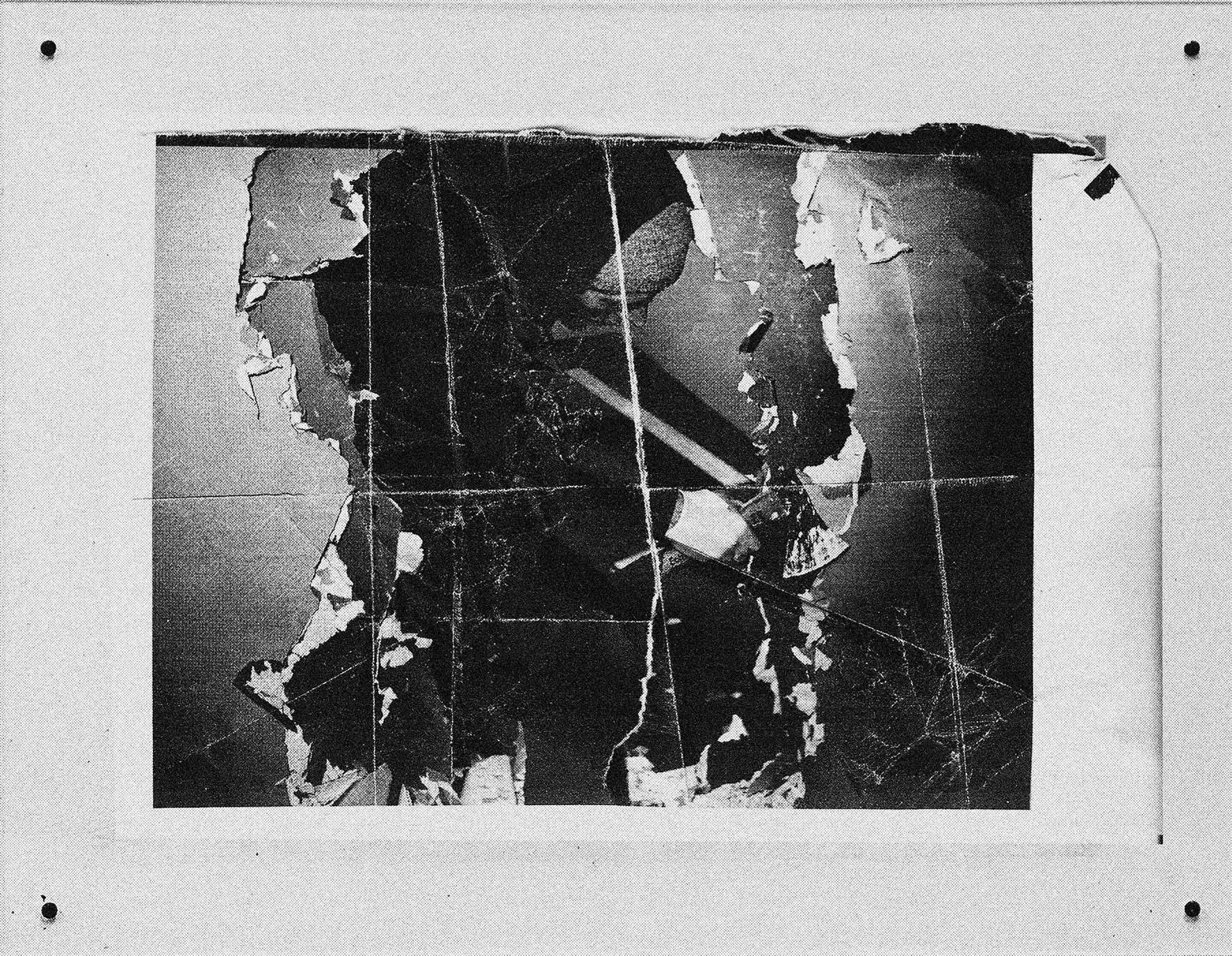
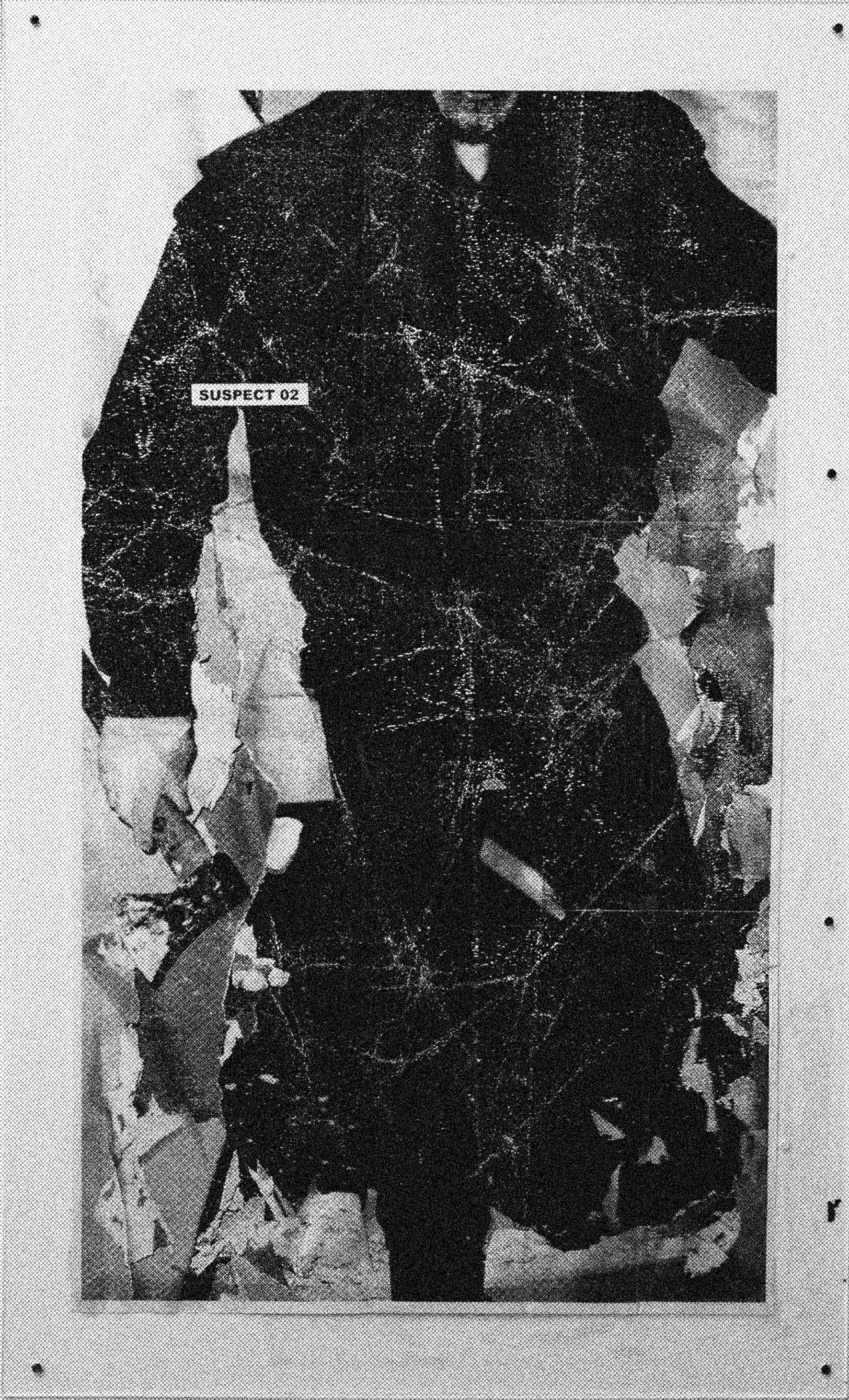
We Did It / Disputed Territory
The 100%-Berlin courtyard leading to Chert gallery feels dark and cold as we approach the exhibition space, passing by a succession of wall-mounted, neon-lit display vitrines, the kind you find flanking old storefronts or outside movie theaters. These windows are elegantly scattered around the courtyard, anticipating the larger, brighter display of Motto bookstore and distracting from the small, beautifully designed signs demarcating the entrance of CHERT and its spin-off space, CHINO.
The entrance to the gallery is closed, its front windows revealing a sober installation of crumpled, taped photocopies, a solitary screen and a set of tilted wooden steps leading to a large crack in the wall. Taking the hint of a partially open door, out by the right side of the gallery space, we sneak into what seems like a bike storage or boiler room. The smell of cold rancid coffee and freshly violated construction materials lingers in the devastated space. Broken tiles, graffiti, drapings of black trash-bag plastic and accumulations of rubble/dirt might initially strike one as entropic sculptures but quickly reveal their intentional nature.
We can almost feel the doppelgänger presence of long-gone intruders, their hammers smashing hard against the sheet-rock wall, finally piercing it to reveal the adjacent gallery space The work had started at the entrance door – marked in black duct tape and apparently tampered with – then proceeded with the vandalization of the room and finally focused on the partition wall, which had been smashed open to let adventurous visitors squeeze through it and intrude into the closed, lit-up gallery space and become themselves objects of the installation.
The temporary activation of the gallery space had been proclaimed on an outdoor banner hung by the nearby Schlesisches Tor U-Bahn stop. The banner coldly indicates the longitude and latitude of the reclaimed spot in black spray paint and bears the slightly naïve, triumphant words ‘We Did It!!! Undisputed Territoryy (sic)’. Philippe Van Wolputte’s loud declaration of accomplishment was almost immediately removed by mysterious hands and exists now only as document, xeroxed, crumpled and taped inside the gallery space. A seemingly faux security camera video further contextualizes the situation by showing the artist and an accomplice as they force their way into the room they decided to elect to the status of temporary autonomous zone.
But what is this temporary space and what should it be made autonomous from, exactly? Differently from much of his previous work, in which he has addressed public space and the phenomenon of shrinking cities by reclaiming actual condemned buildings, Van Wolputte is now at work on the fictionalization of an already rather fictional gesture. As Wilfried Lentz has noted in a text reprinted on the artist’s website, abandoned, deteriorated and reclaimed spaces serve an important function in the memory and social landscape of the city, possessing a beauty of their own and, we might want to add, functioning as reminders of urbanism’s very own dysfunctionalities and failures. The demolition of these spaces removes not only their ‘unsafety’ and/or inappropriateness, but also an unwanted history of chaotic and irrational urban development.
The gallery press release remarks on how the installation seems to present itself as a question about what is public and what is private, fusing space and non-space, the art context and the temporary context made available by Van Wolputte’s hammer, tape and spray paint. While the superficial appearance of the work remains rough, pragmatic and direct, that very look and feel also seems to camouflage the more important issues of authenticity and intellectual honesty. Van Wolputte’s handling of the inherent fictionality of his environments/actions is complex and confusing, pointing in different directions while maintaining a consistent attention to detail as well as a rigorous overarching aesthetic. The use of ‘poor’ materials for the reproduction and presentation of his actions, for example, radicalizes the artist’s control over what is shown and betrays a partial and – ultimately – idealistic conception of reality. The artist’s break-in cannot be considered a performance in itself. It rather suggests a synthetic re-enactment and transfiguration of countless other fictional (and real) break-ins, fragmented memories and afterimages collected from art and non-art sources and projected onto the imagination and personal memories of the viewer. The broken wall and its opening onto the light of the clean gallery space is the pierced skin separating the illusion of a fictionalized reality bite from the hard, cold fact of artifice, spectacle and commercialization.
Rubble and smashed walls look really great on photocopy, but in the case of this installation they actually are photocopies. One presumes that at the end of this show every single shard of broken wall, lump of plastic sheet, spray paint and coffee stain will be cleaned. The artist’s ‘disputed territory’ will hopelessly get back to its normalcy.
Marco Antonini (2010)
We Did It / Disputed Territory
In his first solo exhibition in Berlin, Belgian artist Philippe Van Wolputte fuses guerrilla art in public spaces with the more viewer-friendly art-dedicated exhibition space. Entitled ‘We Did It / Disputed Territory’, the show divides the gallery space into two levels. The upper level has been sealed off with a sheetrock wall, giving it the air of an abandoned and neglected space.
It is dirty and cold, and the power has been long cut off. In order to reach the gallery’s lower level, viewers must walk through this antechamber that looks more like a construction site than an exhibition space. The door and parts of the walls are covered with large sheets of black plastic, cut out from industrial garbage bags and sprayed on with construction waste and dust. The only source of light in this derelict cavity comes from a literal hole in the wall. Through the hole, one can see the galley’s lower level and leap, like a curious Alice in Wonderland, into a different realm – a clean, white and welcoming exhibition space.
However, the artworks on view here share the same guerrilla aesthetic. They are rigid, deliberately dirty and low-budget. The images are made of xeroxed copies pasted together to complete pictures which document the process of appropriating the gallery space. The main image is a shot of the short-lived ‘exhibition poster’ – a site-specific piece hung at the very public space of Schlesisches Tor Station, just across the street from Chert. The sign bears the exhibition title alongside the gallery’s geographic coordinates. It is an abstract object, unrevealing and uninformative, that is, unless one was to enter the coordinates into a portable navigation device or look up the show’s title on the internet. And so, whether intentionally or not, the temporary public piece (it was removed after only one day) also explores the meaning of public and private in the age of digital information.
Hili Perlson (2010)